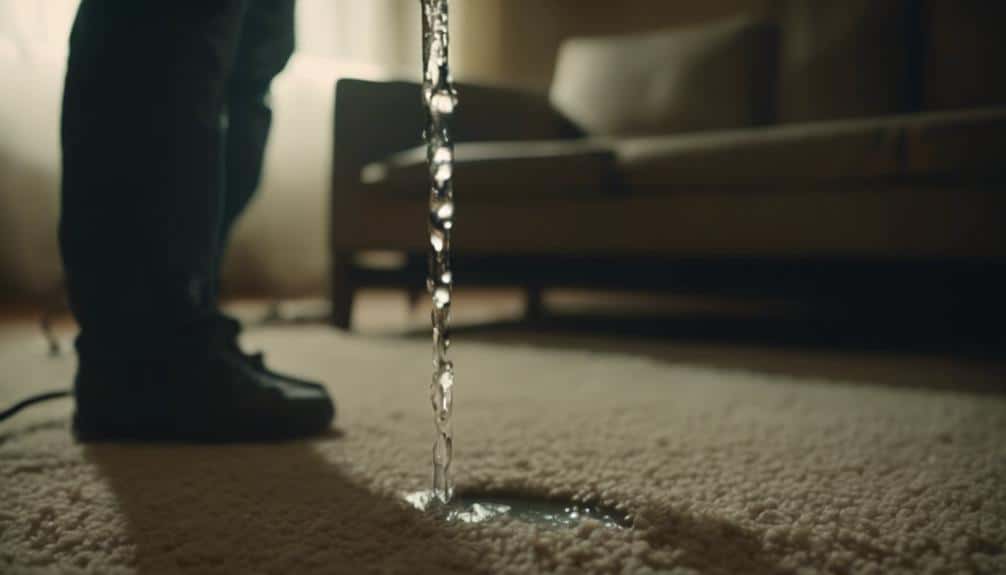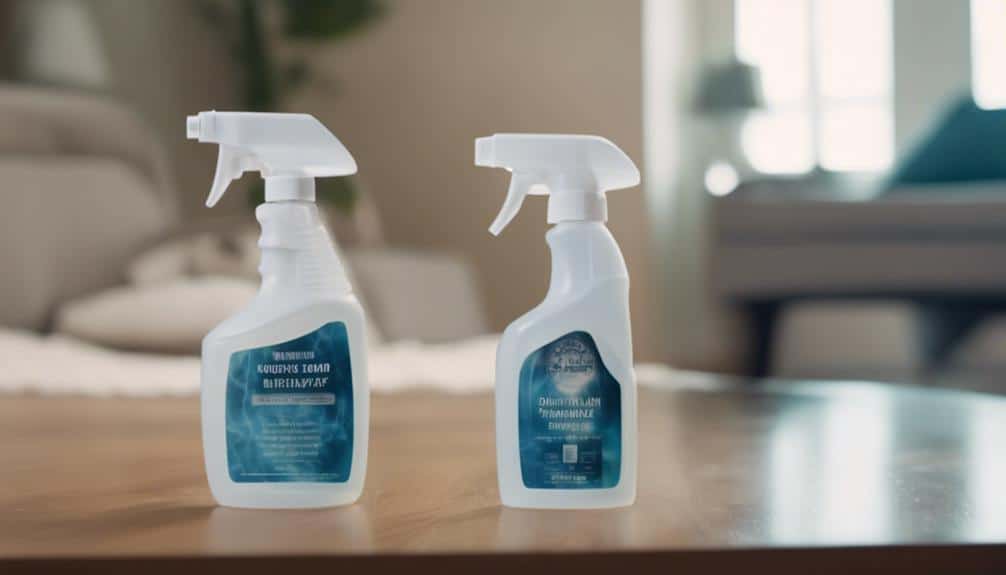5 Steps to Get Rid of Musty Smell in Your House
Tackling a musty smell in your house can seem like a challenging task, but rest assured, as we have outlined five simple steps to help you combat this issue effectively.
From identifying the root cause of the odor to utilizing specialized remedies, you’re in good hands.
By following these steps, you’ll be able to transform your living space into a fresh and inviting environment.
Ready to say goodbye to that musty smell once and for all?
Identify the Source of Odor
To pinpoint the cause of a musty smell in your house, conduct a thorough inspection of potential sources such as damp areas, mold growth, and water damage. Begin by checking areas prone to moisture like bathrooms, kitchens, and basements. Look for any signs of leaks under sinks, around showers, or near water fixtures. Mold and mildew thrive in damp environments, so pay close attention to any visible growth on walls, ceilings, or grout lines. Inspect any areas where water damage may have occurred, such as around windows or in the attic.
Identifying the source of the musty odor is important for effective odor elimination. Proper ventilation is key to preventing musty smells, so make sure that areas like bathrooms and kitchens are adequately ventilated to reduce dampness. Addressing any leaks or moisture buildup promptly can help prevent mold growth and eliminate the musty smell from your home. Conducting a thorough inspection will help you target the source of the odor and take the necessary steps to get rid of it.
Improve Ventilation
Improving ventilation in your home is a practical way to reduce humidity levels and prevent musty odors from lingering. Here are some steps to help you improve ventilation and create a healthier indoor environment:
- Open Windows: Allow fresh air to circulate by opening windows, especially when the weather is dry. This will help reduce humidity levels and eliminate stagnant air.
- Use Exhaust Fans: Utilize exhaust fans in bathrooms and kitchens to improve air circulation and remove excess moisture. This can prevent mold growth, which is a common source of musty odors.
- Ventilate Regularly: Make it a habit to ventilate your home regularly, even during colder months. Proper ventilation helps maintain good indoor air quality and ensures that odors don’t linger.
- Increase Fresh Air Flow: Increasing the flow of fresh air into your home will help eliminate musty odors and keep the indoor environment fresh and pleasant. Good ventilation is key to a healthy indoor environment.
Remove Moisture Sources

Identifying and addressing water leaks and sources of moisture is essential in eliminating the root cause of musty smells in your house. Fixing water leaks promptly is important to prevent moisture buildup.
Proper ventilation in areas like bathrooms, kitchens, and basements helps reduce humidity levels, making it harder for musty odors to develop. Using a dehumidifier can effectively remove excess moisture from the air, hence preventing mold growth and maintaining dryness in your home. Remember to keep damp items such as towels, clothes, and rugs dry to avoid mildew and mold, which can contribute to musty odors.
Regularly inspecting and maintaining your HVAC system is necessary to prevent condensation and moisture buildup, which are common sources of musty smells. By reducing humidity levels and eliminating moisture sources, you can effectively prevent mold growth and maintain a fresh-smelling home.
Clean and Disinfect Affected Areas
Inspecting and addressing mold-prone areas is the initial step in effectively eliminating musty odors from your home. To clean and disinfect affected areas properly, follow these practical steps:
- Use the Right Cleaning Solution: For minor mold spots, a mixture of warm water and dish detergent can be highly effective in cleaning and disinfecting. For moderate mold growth, dilute chlorine bleach can help eliminate both the mold and the musty odors.
- Clean All Surfaces: Make sure that you clean all surfaces where mold is present, including ceramic tile, grout, and fabrics. Thorough cleaning can prevent further musty smells from developing.
- Wear Protective Gear: When dealing with mold-prone areas, always wear protective gear like gloves, goggles, and a mask to make sure your safety and thorough disinfection.
- Proper Disposal: Utilize a wet/dry vacuum to remove mold, seal off vents to prevent spores from spreading, and dispose of any mold-covered materials properly to prevent recontamination.
Use Odor Neutralizers

To effectively combat musty odors in your home, incorporating odor neutralizers such as baking soda, charcoal, and activated carbon can be highly beneficial. These odor neutralizers are effective at absorbing and eliminating musty smells, helping to improve indoor air quality and create a fresh and clean environment. Here is a table illustrating the different types of odor neutralizers and their benefits:
| Odor Neutralizer | Benefits |
|---|---|
| Baking Soda | Absorbs odors in small spaces like closets and bathrooms |
| Charcoal | Neutralizes musty odors, especially in damp areas |
| Activated Carbon | Removes odors from the air, enhancing indoor air quality |
Utilizing these odor neutralizers can greatly help in eliminating unwanted smells from your home. Whether it’s placing baking soda in open containers, strategically positioning charcoal briquettes, or using activated carbon filters in air purifiers, these methods work by trapping and absorbing the molecules responsible for the musty smell, leaving your home smelling fresh and clean.
Conclusion
To sum up, by following these 5 steps to get rid of musty smells in your house, you can effectively eliminate the unpleasant odor and create a fresh, clean environment.
By identifying the source of the odor, improving ventilation, removing moisture sources, cleaning and disinfecting affected areas, and using odor neutralizers, you can enjoy a more pleasant living space free of musty smells.
Keep your home smelling fresh and inviting with these simple tips!






